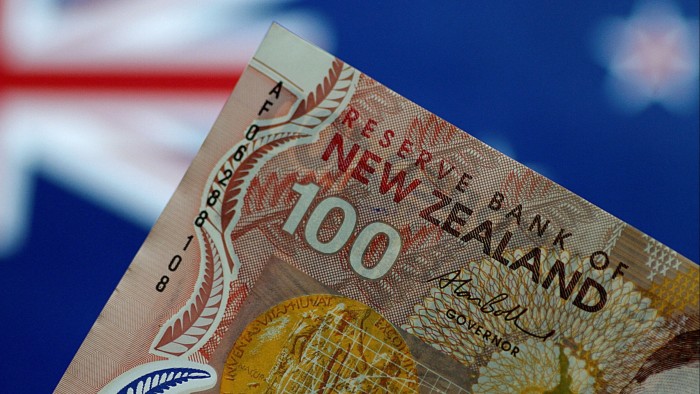Unlock the Editor’s Digest for free
Roula Khalaf, Editor of the FT, selects her favourite stories in this weekly newsletter.
The New Zealand dollar slumped to a four-month low after the country’s central bank lowered interest rates and signalled further cuts to combat a weak domestic economy and global uncertainty over Donald Trump’s tariffs.
The Reserve Bank of New Zealand cut interest rates by a quarter of a percentage point to 3 per cent, as expected, but revealed that two of the six members of its Monetary Policy Committee voted for a bigger cut of half a percentage point.
Economists at RBC Capital Markets said the outlook represented a “big shift in tone” from the July meeting, when the central bank held interest rates amid concerns over inflation.
ANZ, the Australian bank, said it now expected two further interest rate cuts after the dovish pivot.
The New Zealand dollar fell 1.1 per cent against the US dollar to a four-month low.
New Zealand was one of the first countries to raise interest rates after the pandemic to deal with rampant inflation, but has steadily cut in recent quarters from a peak of 5.5 per cent. The 3 per cent rate is the lowest in three years.
The bank said New Zealand’s economic recovery had stalled in the second quarter of the year, with household and business spending constrained by global economic uncertainty and exacerbated by higher unemployment and declining house prices.
The unemployment rate hit 5.2 per cent in June, the highest for five years.
The central bank also said tariffs and uncertainty around economic policy had damped the global economic outlook. New Zealand was hit with a 15 per cent tariff as part of the Trump administration’s revised regime last month, higher than the initial 10 per cent levied.
“Some firms and industries may experience more challenging export conditions as a result,” the RBNZ said.
Sharon Zoller, chief economist for New Zealand at ANZ, said the pointers to further cuts were a sign that the central bank had responded to the more downbeat economic data.
“We suspect we are around peak pessimism currently, but the economy nonetheless looks like it needs more support. And today it got it, with a recalibration of market expectations for where the [interest rate] will be over coming months feeding straight into lower wholesale rates and a weaker currency. That will help underpin the economic recovery,” she said.
While New Zealand is often a leading indicator of global macroeconomic trends, the signals from the central bank were more related to domestic rather than external factors, ANZ said.
“The fall in the New Zealand dollar today is not an imminent signal of US dollar resurgence,” it said.
